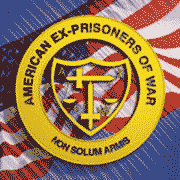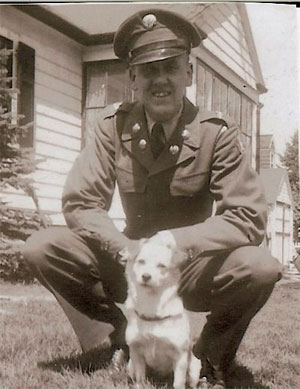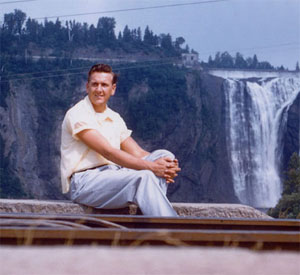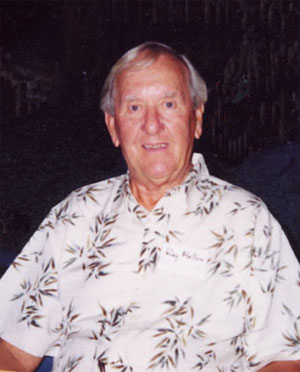
Established April 14, 1942
 |
American Ex-Prisoners of War
A not-for-profit, Congressionally-chartered veterans’ service organization advocating for former prisoners of war and their families.
Established April 14, 1942 |


Ray Mellin i in 1949
|

Ray Mellin in 1954
|

Ray Mellin in 2001
|
| Last Name | First Name, Middle Init. | Nickname |
| Spouse | City | State, Zip |
| Conflict | Branch of Service | Unit: |
| Military Job | Date Captured | Where Captured |
| Age at Capture | Time Interned | Camps |
| Date Liberated | Medals Received | |
| After the War ... | ||
They were taken first to Seoul, which had been captured by North Korea. Although the North Korean army did not follow the Geneva Conventions and thought nothing of shooting prisoners, they did spare some for interrogation and propaganda purposes. Ray, was one of these lucky ones.
He remembers being questioned in groups of three or four. They heard periodic bursts of machine gun fire in the adjoining courtyard and assumed that they would be executed soon. The prisoners were relieved to learn that the gunfire was used only as a scare tactic. At one point, the captured soldiers were paraded through the streets, cameras recording their humiliating treatment in propaganda films.
They were then later marched north to Panmunjom -- a "death march," as it would later be called. Besides soldiers, there were priests, nuns and other missionaries, including a Salvation Army officer, on that march. The ordeal was made more difficult by the fact it was by then winter. Winter temperatures in Korea could drop to 45o or 50o below, and the captives were still in the summer clothing they'd been captured in.
Mellon recounted that their biggest problem was lice. "Sometimes when a dead body turned cold, you could see the lice leaving it, looking for another warm host. There was also the threat of being shot by the North Korean forces guarding them. Mellin estimated they lost "one man every mile." Of about 850 prisoners , he estimated some 300 survived the various prisons they were kept in.
The death toll might have been even higher, he said, had their North Korean captors not been replaced at some point by their Chinese allies, who were somewhat less brutal. Ray was forced to attend classes in which the red Chinese tried to teach the prisoners the benefits of communism. He kept a notebook, which he still has, without notes related to communism. He recorded instead the various locations of his imprisonment in code as well as names, dates and other memorabilia.
Ray Mellin spent 37 months as a prisoner of war. When the war ended, Mellin returned home suffering from post-traumatic stress disorder and spent a year recovering at Valley Forge Army Hospital. While there, he learned to play golf, which became for him a "lifelong passion."